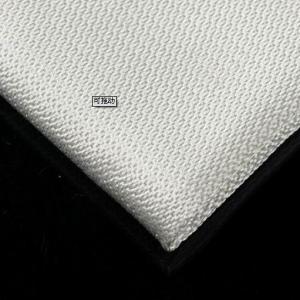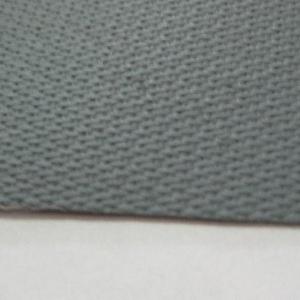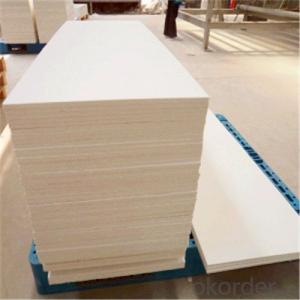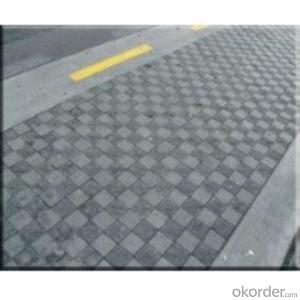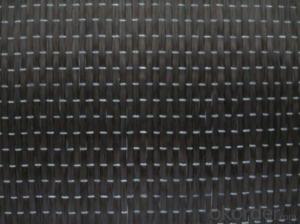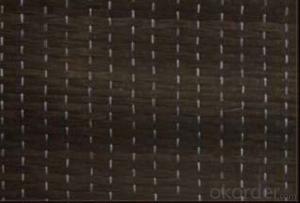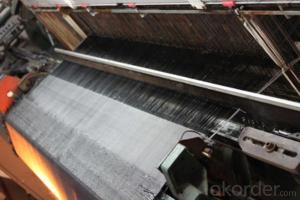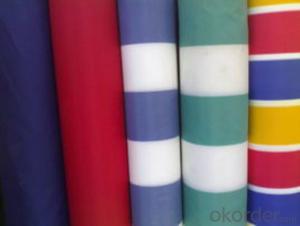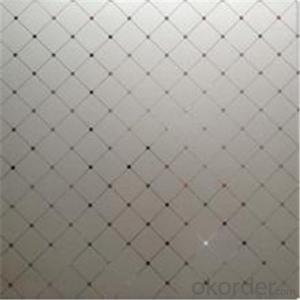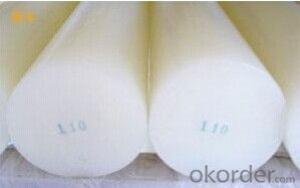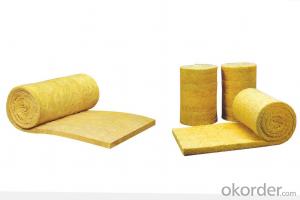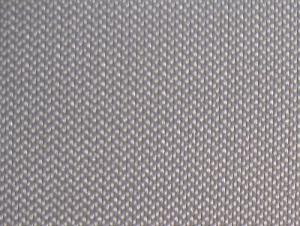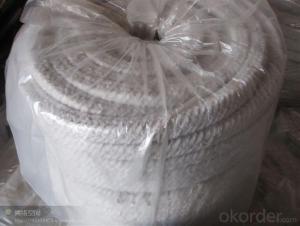Silicone Coated Fiberglass Fabric
- Loading Port:
- China Main Port
- Payment Terms:
- TT or L/C
- Min Order Qty:
- 10 tons kg
- Supply Capability:
- 2*20FCL Per Month kg/month
OKorder Service Pledge
OKorder Financial Service
You Might Also Like
General information of Silicone Coated Fiberglass Fabric
Silicone fiberglass fabric is made with the basal material of high temperature resistant fiberglass fabric and silicone rubber by follow-processing; It is a compound material with high quality of performance. It has been widely used in spaceflight, chemical industry, petroleum, large generating electricity equipment, machinery, metallurgy, electric insulation, construction and other fields.
Main capability and characteristics of Silicone Coated Fiberglass Fabric:
1). Good performance on resisting high temperature and low temperature, (the resistance of lowest temperature: -70 degrees to highest temperature: 280 degrees); Good capability on temperature maintaining;
2). High strength: It is soft and ductile, could be tailored;
3). Good capability on chemical corrosion resistant, oil-proofing, waterproofing (washable);
4). Heat-aging and chemical-aging resistant, and preventing from ozone, oxygen and light;
5). High insulation performance, constant dielectric: 3-3.2, breakdown voltage20-50kv/mm.
Main application of Silicone Coated Fiberglass Fabric:
Fiberglass fabric coated with silicon rubber product is a new complex material which has been widely used in such fields as: Construction, electric insulation, pipeline ductile conjunction, chemical corrosion resistant, sealing, etc. The main using fields are:
1). Electric insulation:
Fiberglass fabric material coated with silicon rubber has high electric insulation grade, and it could endure high voltage load, be made into insulated fabric, pipeline, etc
2). Non-metal compensating facility:
Non-metal compensating facility is an instrument for pipeline ductile injunction, and it could solve such sabotage problems to pipeline as heat inflating-cold reducing; It is used as the basic material of ductile inflating knot, having the capability of high using temperature, corrosion resistant, seasoning resistant, good elasticity and ductile. This kind of product has been widely used in petroleum, chemical industry, cement, steel and copper, energy, etc, and has got good using efficiency;
3). Corrosion proofing field
Fiberglass fabric coated with silicon rubber could be used as external and internal corrosion proofing layer of pipeline and preservation jar, and it has excellent corrosion resistance, good capability to resist high temperature, high strength, so it is an ideal corrosion-proofing material.
4). Other fields:
Fiberglass fabric coated with silicon rubber could be used on sealing material of construction, high temperature corrosion-proofing belt, packing material, etc.


- Q:What do 02 and 04 of fiberglass cloth refer to?!
- According to the composition of glass, roving can be divided into E-GLASS alkali free glass roving and alkali glass roving in C-GLASS.
- Q:How does glass fiber textile handle heat?
- Glass fiber textile possesses remarkable heat resistance properties, renowned for its ability to endure elevated temperatures without compromising its structural integrity or performance. This exceptional heat resistance stems primarily from the composition of glass fiber textile, constructed by weaving together glass fibers to create a robust and enduring fabric. The melting point of glass fiber textile is notably high, typically reaching around 1500 degrees Celsius (2732 degrees Fahrenheit). Consequently, it can withstand extreme heat without succumbing to deformation or melting. Additionally, its thermal conductivity is low, meaning it does not readily transfer heat. These attributes render it an ideal material for applications necessitating heat insulation. Apart from its remarkable heat resistance, glass fiber textile is highly fire-resistant. It does not ignite or support combustion, making it a secure choice for environments prone to fire hazards. It is often employed in the manufacturing of fire-resistant clothing, curtains, and other protective applications. Moreover, glass fiber textile exhibits resistance to thermal shock. This implies it can endure sudden temperature fluctuations without fracturing or breaking. This characteristic renders it suitable for applications characterized by extreme temperature fluctuations, such as industrial furnaces or automotive engines. All in all, glass fiber textile emerges as an exceptional material for managing heat, courtesy of its high temperature resistance, low thermal conductivity, fire resistance, and thermal shock resistance. It finds extensive utilization in various industries where heat insulation, fire protection, and durability play crucial roles.
- Q:Can glass fiber textiles be used in garden or agricultural products?
- Yes, glass fiber textiles can be used in garden or agricultural products. They are commonly used in the manufacturing of greenhouse covers, plant protection nets, and erosion control fabrics due to their durability, resistance to weather conditions, and ability to provide proper ventilation and light transmission.
- Q:Are glass fiber textiles suitable for electrical insulation?
- Glass fiber textiles are well-suited for electrical insulation. They are created by weaving thin strands of glass into a fabric-like material. This material possesses excellent electrical insulating properties, thanks to the non-conductive nature of glass. It can effectively withstand high voltages and lacks conductivity, making it perfect for situations where insulation is necessary to prevent electrical shocks or short circuits. Moreover, glass fiber textiles exhibit strong thermal resistance and can endure high temperatures, further enhancing their appropriateness for electrical insulation purposes. They find extensive usage in several industries like electrical engineering, electronics, and aerospace. These textiles are commonly employed to insulate wires, cables, and electrical equipment.
- Q:Are glass fiber textiles resistant to wear and tear?
- Glass fiber textiles are generally resistant to wear and tear, thanks to their exceptional strength and durability. This makes them an ideal material for applications where resistance to wear and tear is crucial. The composition of these textiles allows them to withstand harsh conditions and repeated use without suffering significant damage or degradation. Their high tensile strength ensures they can resist stretching, pulling, or tearing forces that may occur during regular use. Moreover, glass fiber textiles have a low coefficient of thermal expansion, reducing the likelihood of shrinking or expanding due to temperature changes. This further enhances their resistance to wear and tear. In summary, glass fiber textiles are a reliable and long-lasting solution for various industries, including aerospace, automotive, construction, and sports equipment.
- Q:Can glass fiber textiles be used in the production of window blinds?
- Yes, glass fiber textiles can be used in the production of window blinds. Glass fiber textiles are known for their durability and strength, making them suitable for window blinds. Additionally, they offer good insulation properties and can effectively block out sunlight, making them a popular choice for window coverings.
- Q:Can glass fiber textiles be used for sound insulation?
- Yes, glass fiber textiles can be used for sound insulation. They have excellent sound absorption properties due to their porous structure and ability to trap and dampen sound waves. Glass fiber textiles can effectively reduce the transmission of sound, making them a suitable material for soundproofing applications in buildings, vehicles, and other noise-sensitive environments.
- Q:How do glass fiber textiles resist fire?
- Glass fiber textiles resist fire due to the inherent properties of glass, which is highly heat-resistant. The fibers in glass textiles do not burn or melt easily, making them suitable for applications where fire protection is necessary. Additionally, the tight weave of these textiles creates a barrier that prevents flames from spreading, further enhancing their fire resistance.
- Q:Can glass fiber textiles be used in upholstery?
- Glass fiber textiles, also referred to as fiberglass textiles, possess impressive strength and durability, thus rendering them suitable for utilization in upholstery. Their application extends to various domains, including upholstery, as they are often interwoven into fabric to function as reinforcement material. Consequently, they exhibit exceptional resistance to wear and tear, making them ideal for high-traffic areas. Moreover, glass fiber textiles exhibit commendable resistance against fire, UV rays, and chemicals, which contributes to their popularity as upholstery materials. Nevertheless, it is imperative to acknowledge that glass fiber textiles may not offer the same level of softness or comfort as other natural or synthetic fibers do. Therefore, their suitability for upholstery is contingent upon the specific requirements and preferences of the user.
- Q:Can glass fiber textiles be used in insulation panels?
- Insulation panels can utilize glass fiber textiles for their thermal insulation qualities. These textiles, also referred to as fiberglass textiles, are commonly employed in insulation materials due to their exceptional thermal insulation characteristics. The fibers within these textiles consist of delicate strands of glass that are interlaced or knitted together to form a textile material. This textile material can serve as a layer or core material in insulation panels, effectively providing insulation against heat transfer. Glass fiber textiles possess a low thermal conductivity, rendering them resistant to heat transfer. This particular attribute enables them to proficiently trap air and prevent heat transfer through conduction, convection, and radiation. Consequently, insulation panels incorporating glass fiber textiles can contribute to diminishing heat loss or gain, resulting in enhanced energy efficiency and thermal comfort within buildings. Moreover, glass fiber textiles possess qualities such as lightweightness, flexibility, and ease of handling, making them ideal for different insulation panel applications. They can be effortlessly cut and molded to accommodate specific requirements, simplifying the installation process. Additionally, glass fiber textiles are non-combustible, offering an added layer of safety to insulation panels. Apart from their thermal insulation properties, glass fiber textiles also offer additional benefits. They exhibit resistance to moisture, mold, and mildew, making them suitable for usage in damp or humid environments. They are also resistant to chemicals and boast excellent durability, ensuring long-lasting performance. Overall, glass fiber textiles are a popular and effective material choice for insulation panels. Their remarkable thermal insulation properties, coupled with their versatility and durability, make them an apt selection for a wide array of applications, including residential, commercial, and industrial buildings.
1. Manufacturer Overview |
|
|---|---|
| Location | |
| Year Established | |
| Annual Output Value | |
| Main Markets | |
| Company Certifications | |
2. Manufacturer Certificates |
|
|---|---|
| a) Certification Name | |
| Range | |
| Reference | |
| Validity Period | |
3. Manufacturer Capability |
|
|---|---|
| a)Trade Capacity | |
| Nearest Port | |
| Export Percentage | |
| No.of Employees in Trade Department | |
| Language Spoken: | |
| b)Factory Information | |
| Factory Size: | |
| No. of Production Lines | |
| Contract Manufacturing | |
| Product Price Range | |
Send your message to us
Silicone Coated Fiberglass Fabric
- Loading Port:
- China Main Port
- Payment Terms:
- TT or L/C
- Min Order Qty:
- 10 tons kg
- Supply Capability:
- 2*20FCL Per Month kg/month
OKorder Service Pledge
OKorder Financial Service
Similar products
New products
Hot products
Hot Searches
Related keywords
